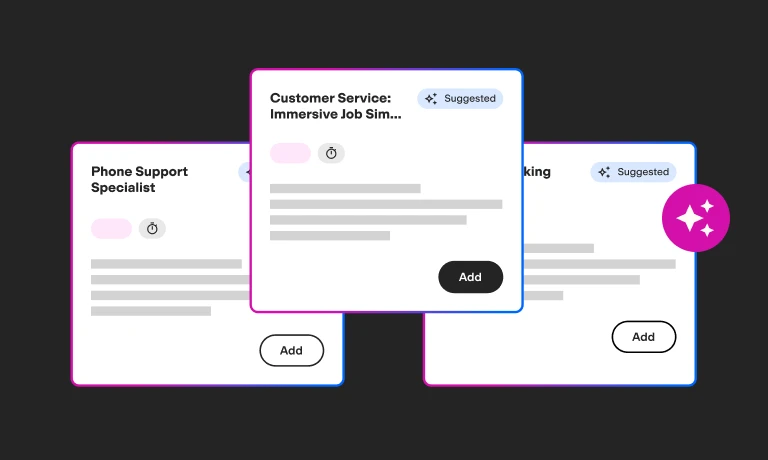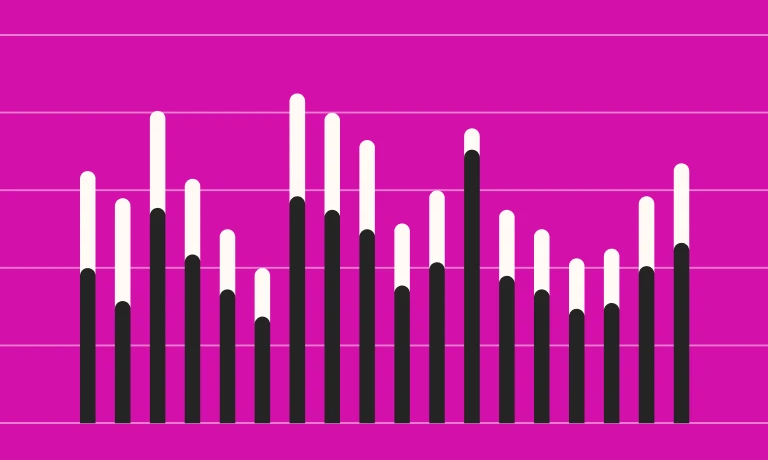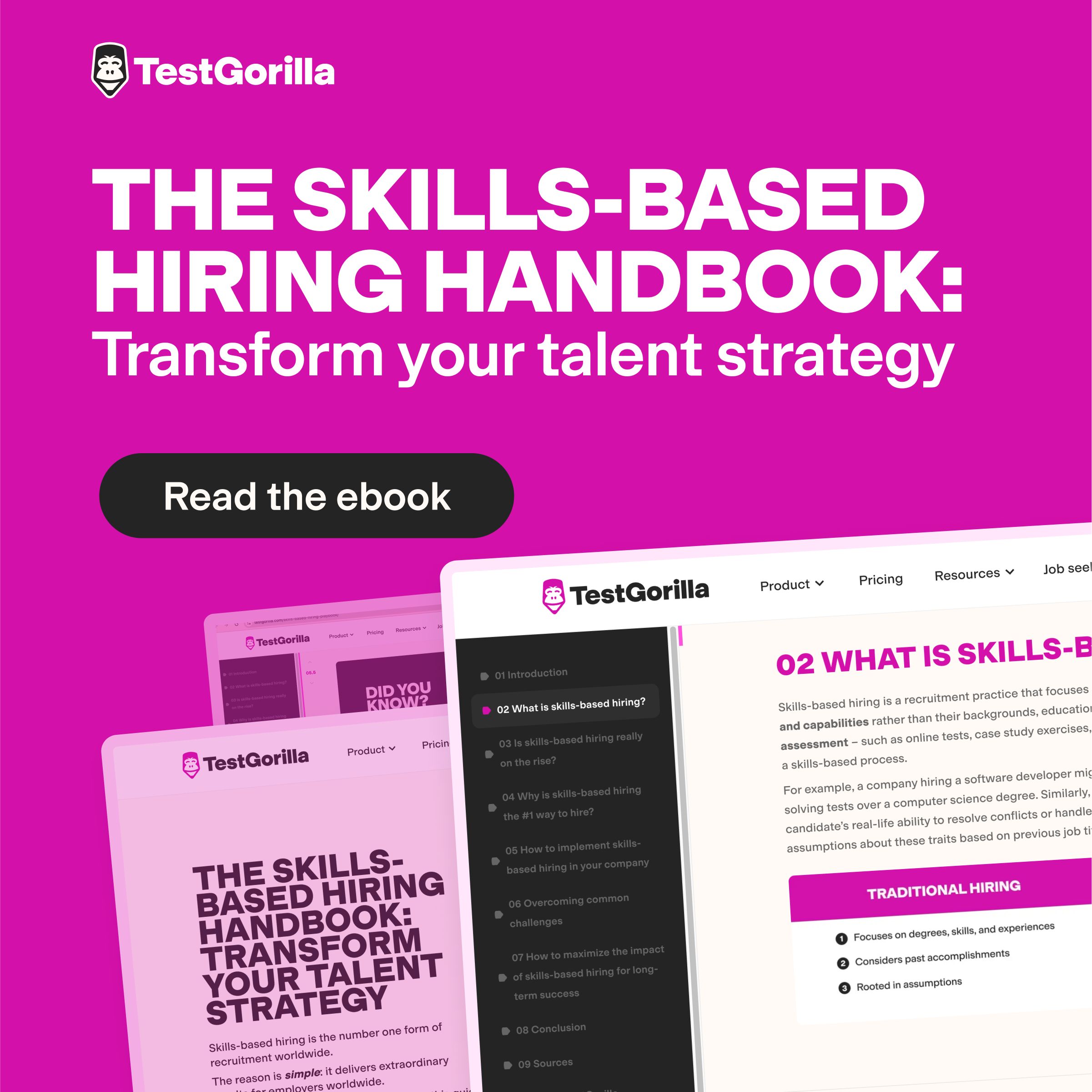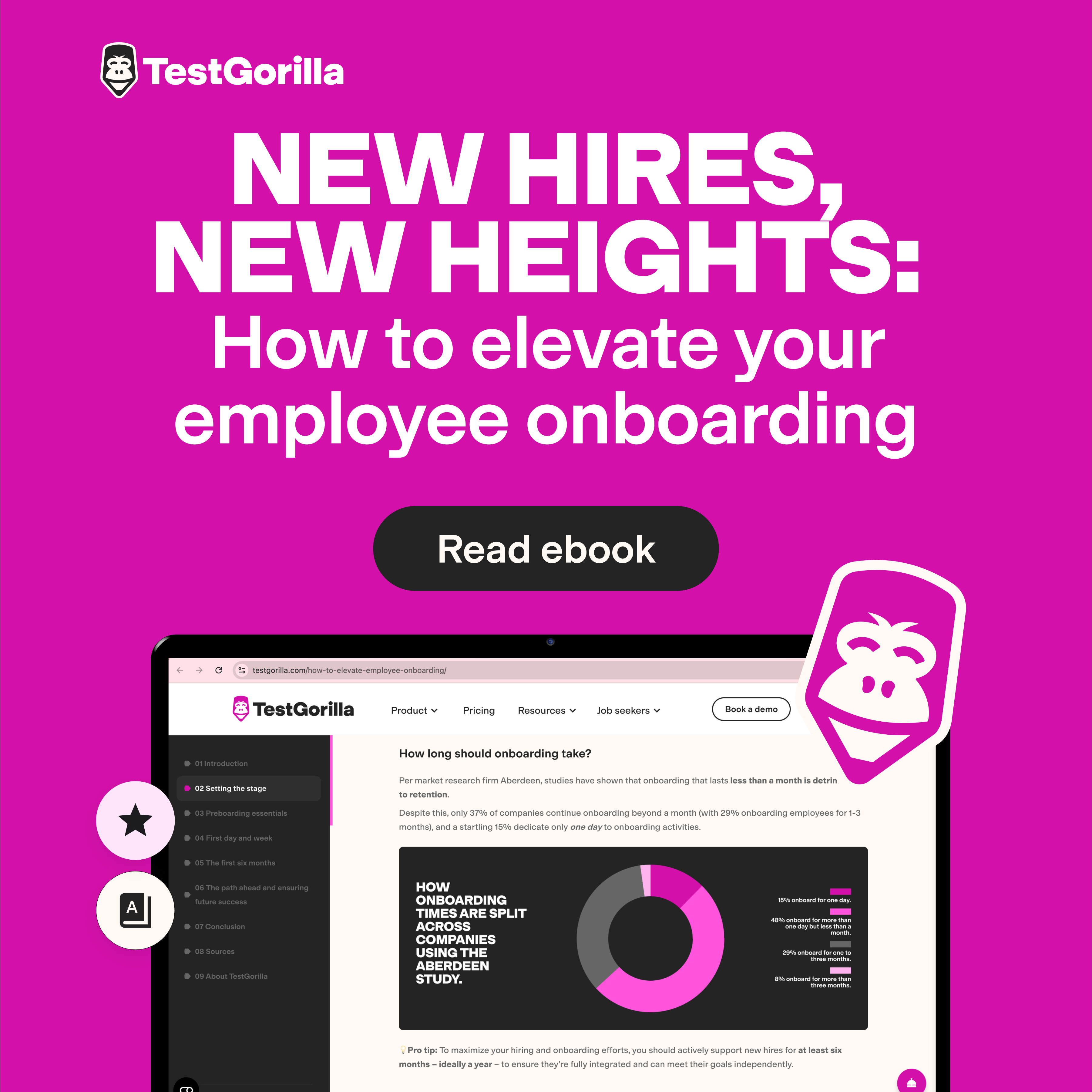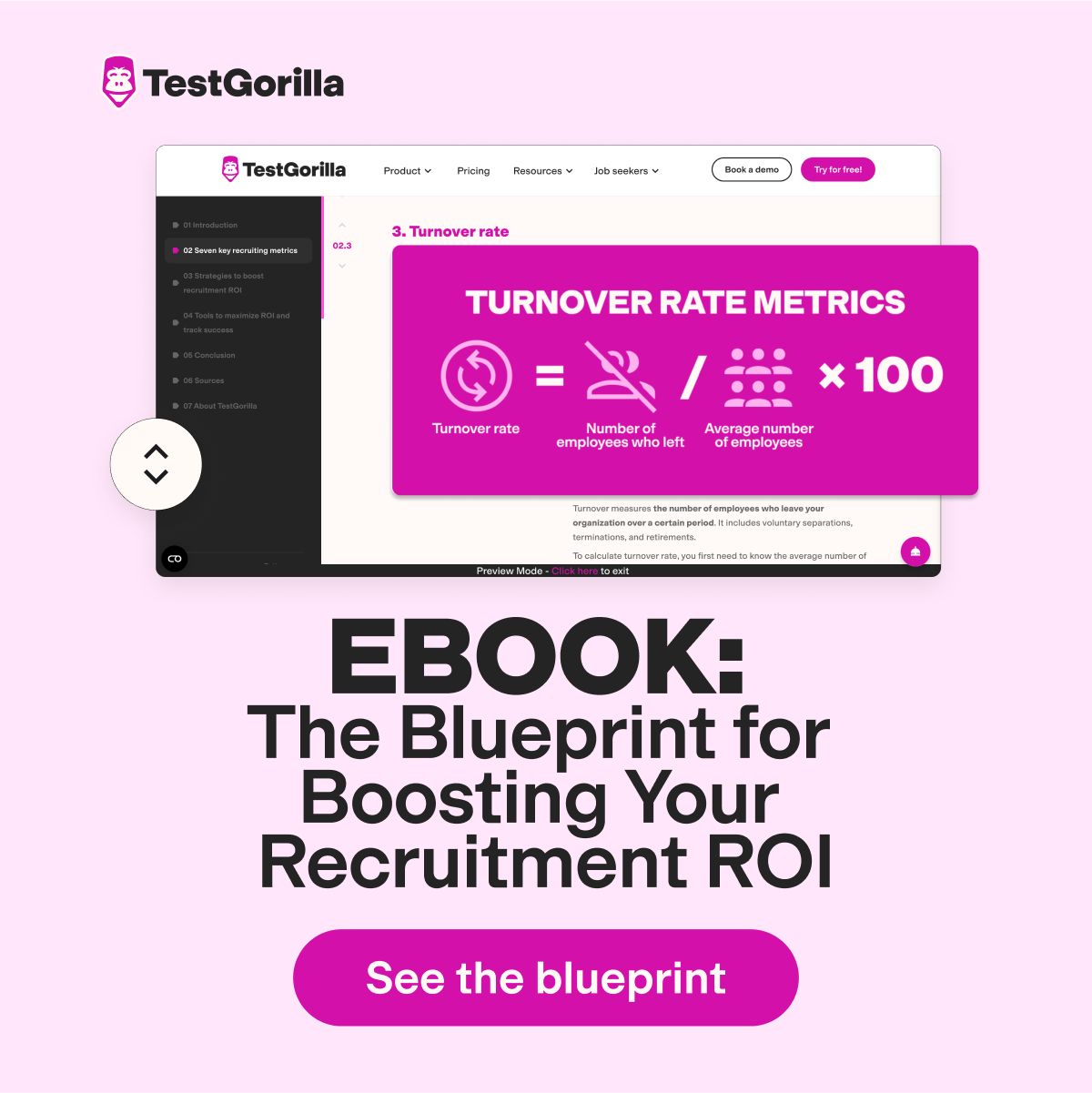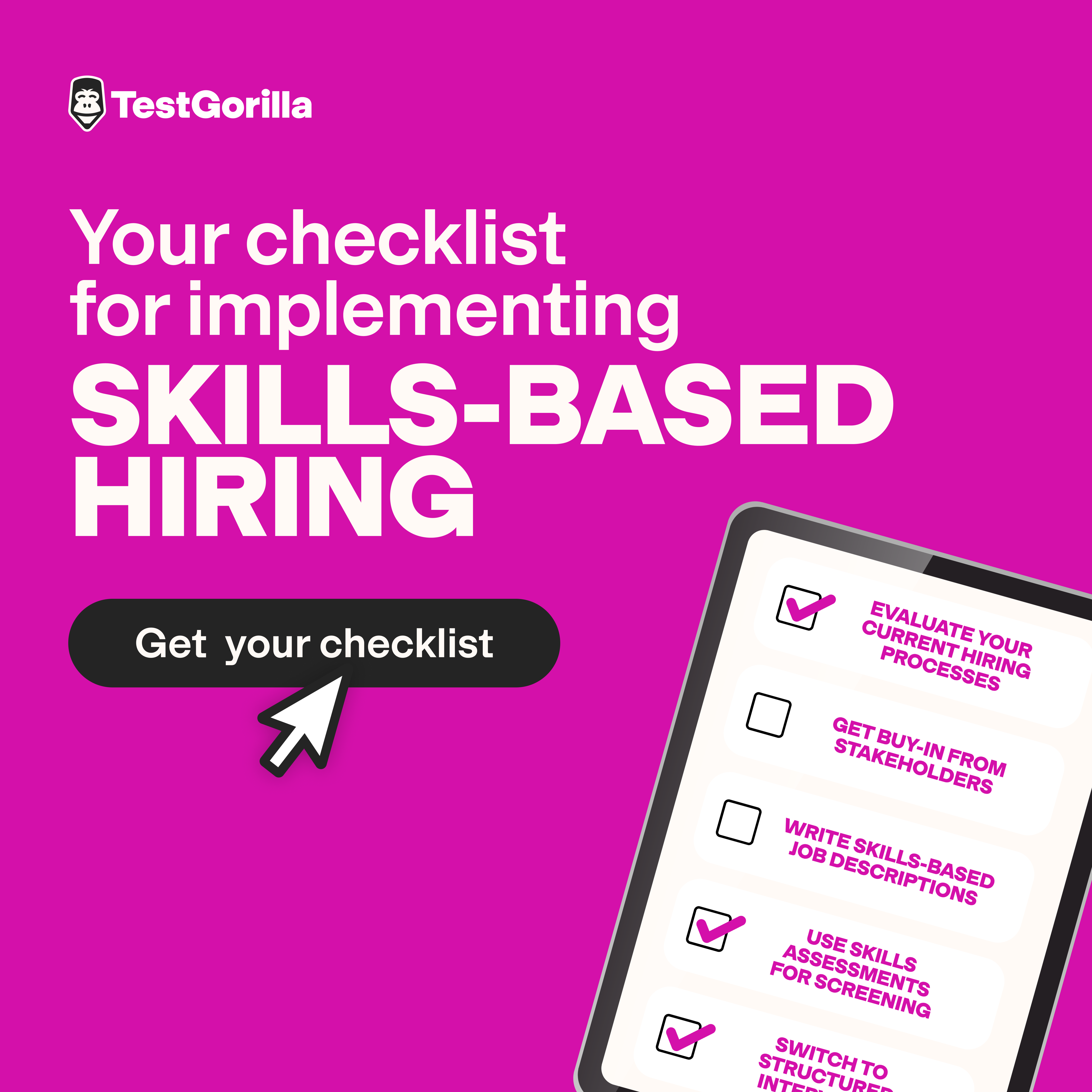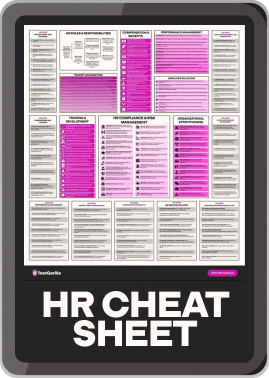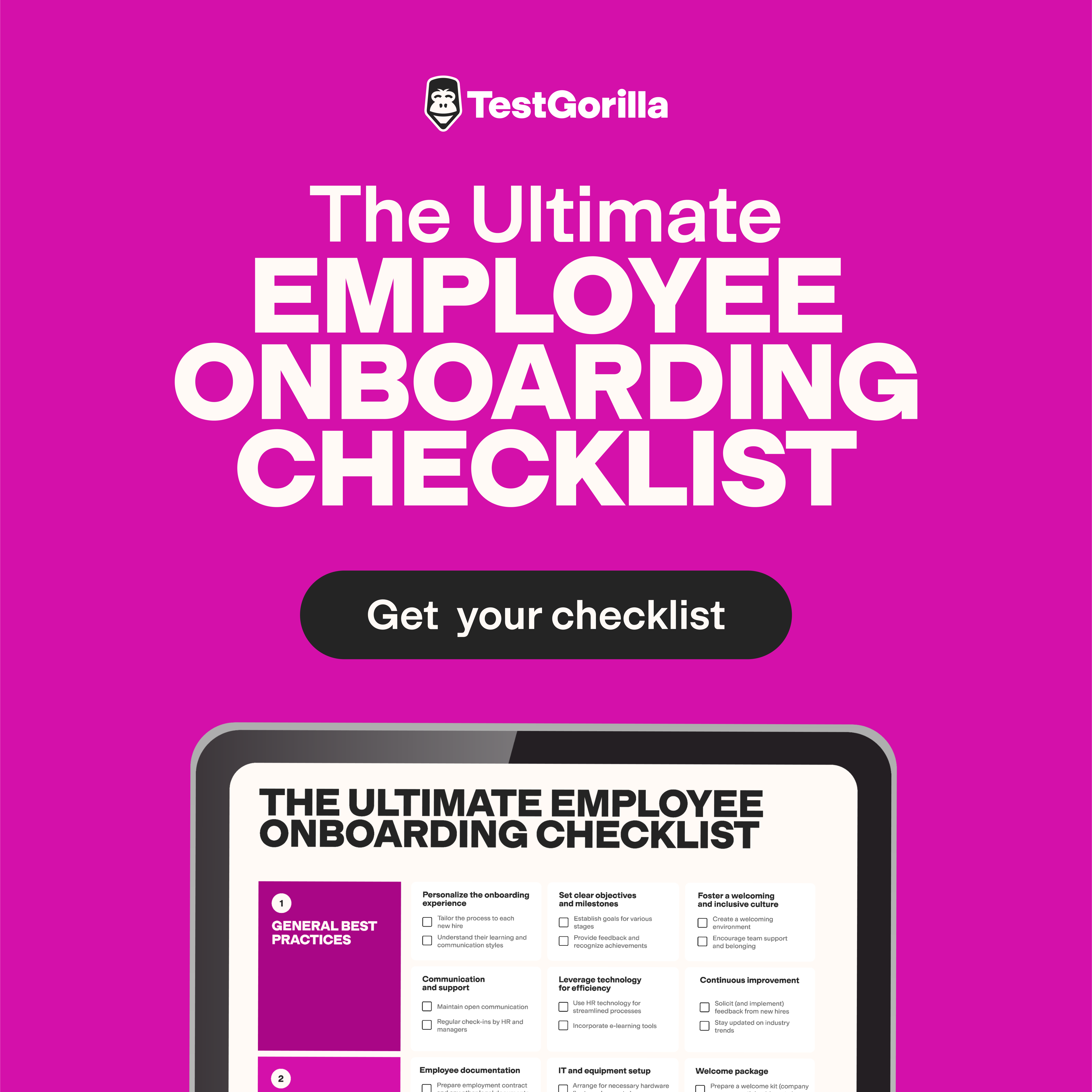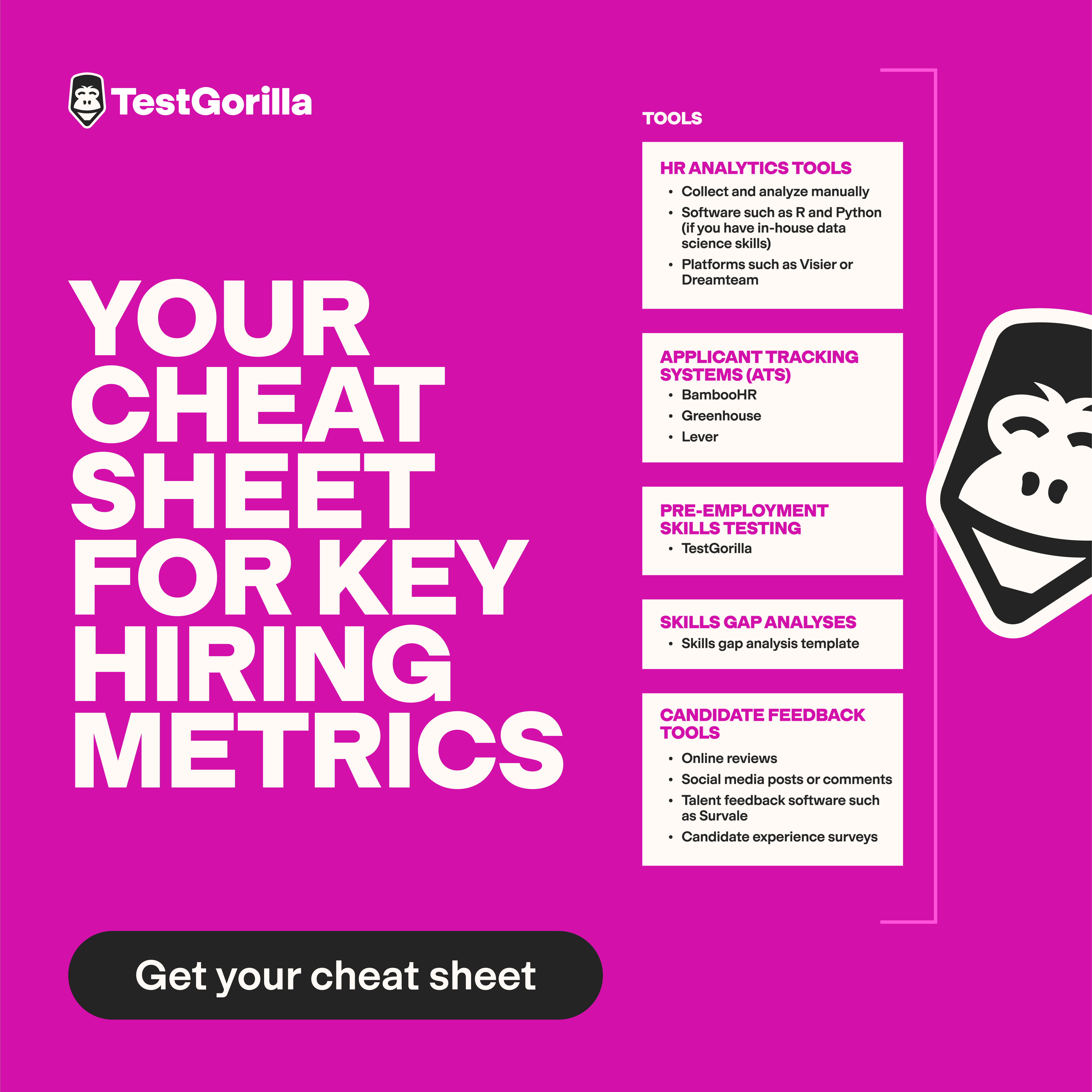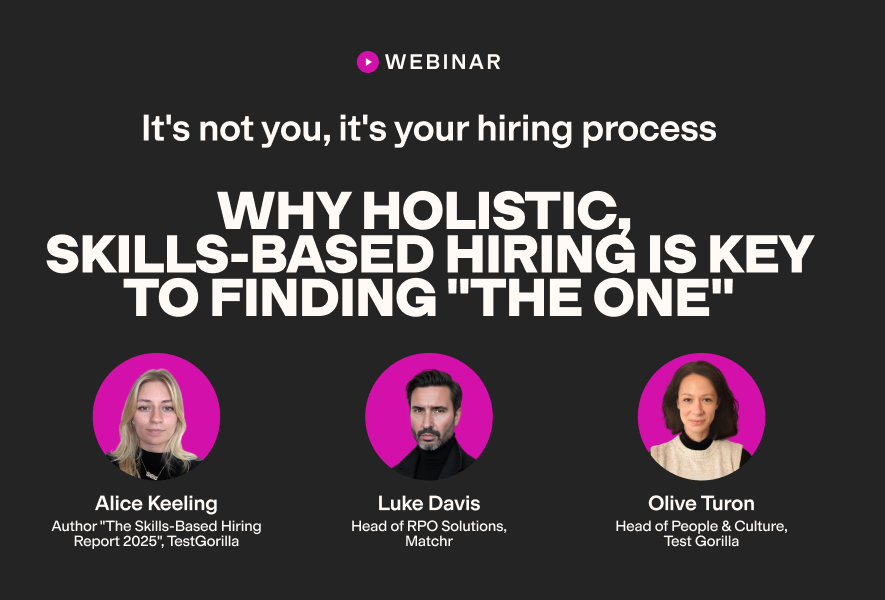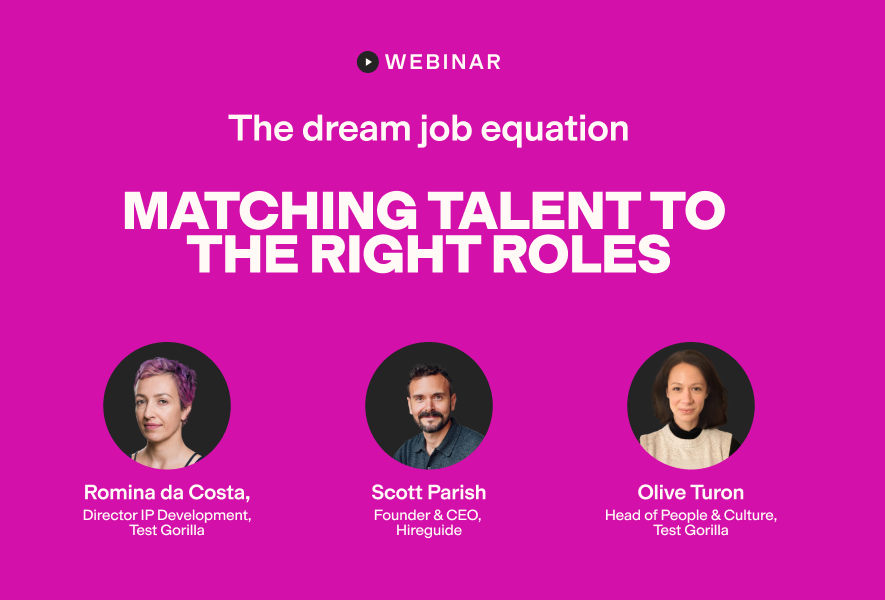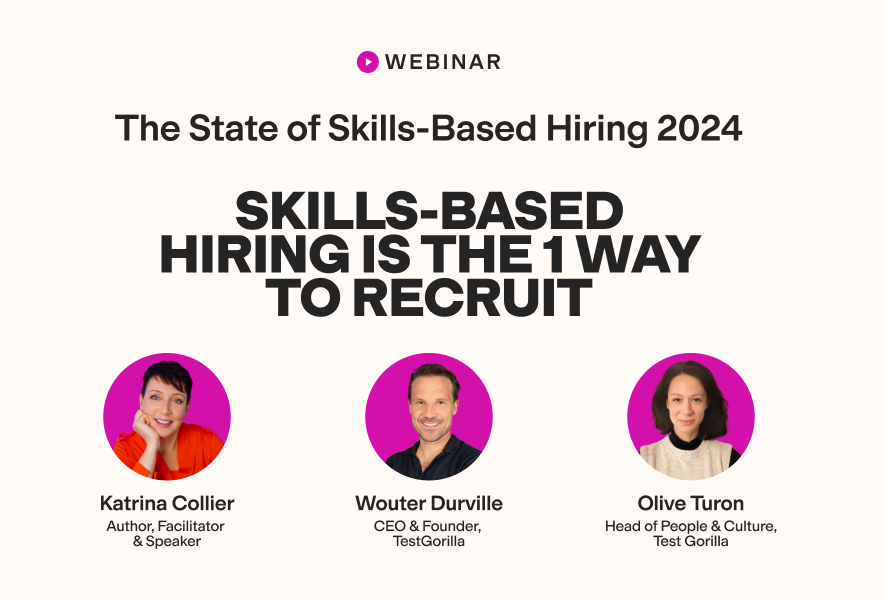Allyship isn’t a label. It’s an action, a verb.
Unfortunately, in the current climate, silence – inaction – can feel easier than using your influence to stand up and support others in the workplace. And even good intentions can undermine real progress if there’s no follow-through or if the follow-through is poorly executed or performative.
My take? Businesses must prioritize authentic allyship – not just to support their underrepresented employees but also to reap business benefits, from attracting more talent to creating workplaces where employees feel psychologically safe.
Let’s look at what it means to be an authentic ally and how you can move beyond intentions to tangible impact.
Definition of allyship: What it really means
First things first. What is an ally? An ally stands with and supports others from a historically marginalized group they’re not a part of.
Allyship – the act of being an ally – helps foster a sense of belonging in the workplace and is an integral part of intentional inclusion.
In a workplace context, allyship often implies the existence of a power differential. Allies typically have more power in the workplace – because of their role or privilege – which they can use to lift others and effect real change.
Allyship is an active word, not a passive label. It involves addressing workplace discrimination, racism, and misogyny in ways that tangibly support those directly impacted.
Performative vs. authentic allies
Allyship easily becomes just another buzzword. You want to avoid being a performative ally or paying lip service to the concept without backing it up with concrete actions.
Xochitl Ledesma, Catalyst’s Director of Leading for Equity & Inclusion, explains, “Performative allies share their knowledge about inequity with others, but don’t use their privilege and resources to make real change.”
You can probably think of examples you’ve witnessed at work:
People who share a gay pride post on their LinkedIn but do little on a day-to-day basis to support their LGBTQIA+ colleagues
A male coworker who regularly refers to himself as a “girl dad” but has no problem talking over female colleagues in meetings
HR sending out an email for Black History Month in an organization that lacks Black leaders and a plan to address it
The problem with performative allyship is that it doesn’t effect real change. At best, it maintains the status quo and, at worst, it further ingrains harmful stereotypes.
So, what’s the solution? I believe the only way forward is to care deeply about being authentic allies, because when allyship is genuine, it creates momentum.
Why allyship matters more than ever
Being a genuine ally in the workplace is essential right now. Let’s look at some reasons why.
1. The political and cultural environment requires strong workplace allyship
How you show up for others at work is especially relevant given that diversity, equity, and inclusion (DEI) is currently under attack by several governments and interest groups.
The US is the leading example of the rising tide of anti-DEI sentiments, with the second Trump administration prioritizing a rollback of previous efforts.
Several subsequent executive orders:
Terminated DEI programs, policies, and positions across the federal government
Directed the Attorney General to review public sector employers and identify ones with “egregious and discriminatory” DEI programs
As a result, many private employers have backed away from their previous DEI commitments – notably Target, Google, and Paramount.
While US employers must proceed with caution in the current climate, I believe they can still strongly believe in DEI, including allyship, and champion it to the extent possible within the law.
2. Encouraging allyship is a strategic business imperative
Aside from the obvious principles of fairness and equity, there’s also a strong business case for encouraging allyship in the workplace.
Deloitte considers allies potentially “the missing link” in creating a sense of belonging and truly inclusive workplace cultures. Research highlights various benefits of inclusiveness (and failing to prioritize allyship means your business could miss out on these)
Why is allyship important to your bottom line?
An inclusive culture can help you attract top talent
A McKinsey global survey with 1,920 respondents found that 39% of employees would turn down a job because of the employer's perceived lack of inclusion.
Psychological safety facilitates innovation
Employees who feel safe speaking up are more likely to share their ideas, leading to better innovation. A Josh Bersin Company study of more than 450 businesses revealed that more inclusive companies are 1.7 times more likely to be innovation leaders.
When employees feel a sense of belonging, they’re happier at work
Employees who feel like they belong thrive and give their best. Plus, they’re less likely to leave. In a US survey by QuestionPro Workforce and EQ Community involving 1,000 workers, 37% said they’d switch jobs to find a more inclusive workplace.
The best insights on HR and recruitment, delivered to your inbox.
Biweekly updates. No spam. Unsubscribe any time.
6 ways to practice allyship at work
To be effective, allyship must be practiced at all levels of an organization – from employees to managers to executive leaders.
Here are some practical ways you can be an authentic ally in the workplace, regardless of your role or stage of your career.
1. Care deeply – and educate yourself
Indifference is a choice that carries real, negative consequences. What does it say about you if you’re unwilling to care about others’ realities?
Thomas Coffin, VP of Engineering at TestGorilla, explains:
“Allyship and inclusive behaviors have a virtuous cycle. The more you care, the more you educate yourself. The more you demonstrate it publicly, the more others will trust you, and the more they will share with you about existing non-inclusive behaviors. The more you will learn, leading you to care even more.”
Caring motivates you to learn about and empathize with experiences you haven’t had yourself. This learning isn’t simply a surface-level, quick-Google-search education but a deep understanding of the historical, political, and cultural contexts that underpin discrimination, bias, and privilege.
Many resources are available to help with this, including books, articles, and podcasts by creators with lived experience.
Here are some suggestions to get you started:
Books:
Nice Racism: How Progressive White People Perpetuate Racial Harm - Robin DiAngelo
Me and White Supremacy - Layla Saad
Disability Visibility - edited by Alice Wong
The Art of Active Allyship - Poornima Luthra
Blogs and websites:
5 Ally Actions newsletter by Karen Caitlin
Podcasts:
Throughout this process, remember that the burden of education is on you as an ally, not on the people you’re trying to support. Sometimes, others may be willing and open to share their experiences with you. If this happens, actively listen and absorb. Don’t try to problem-solve, dismiss, or gaslight their experiences.
Tiffany Yu, CEO and Founder of Diversability, explains, “Allyship begins when we stop assuming and start asking: ‘What do you need? How can I support you?’ Educate yourself about the systemic barriers disabled people face, and don’t rely on disabled individuals to teach you everything.”
2. Acknowledge and understand your privilege
Privilege is an inherent advantage you have based on a personal characteristic, such as race, gender, or background. For example, it’s easier for someone from a higher socio-economic class with college-educated parents to get into an Ivy League school than someone from a poorer background.
When you understand the things about you that make your life that bit easier, you can reflect on how others with different backgrounds or experiences might feel and how you can best use your privilege to uplift others.
This exercise isn’t designed to make you feel guilty or ashamed of your privilege. Nor is this process intended to detract from the challenges you’ve overcome. Instead, it’s meant to help you build empathy and be a better ally.
Jeanine Dooley, head of inclusion & diversity for Diageo North America, speaking to Forbes, explains:
“[Privilege] is a natural divider among communities. For an allyship program to be successful, privilege must be acknowledged; it must be admitted into the conversation. Addressing it head on creates authenticity and honesty. Only from there can candid, open conversation bring allyship to life.”
This is also an opportunity to examine unconscious biases – prejudices we might have towards someone from another background that we aren’t aware of having.
Poornima Luthra (PhD), associate professor at the Copenhagen Business School and author of The Art of Active Allyship, suggests creating a bias compass circle, “a trusted, diverse group of colleagues with whom you’re comfortable being vulnerable checking your biases.” These advisors can give you feedback on your communications and decisions to help you become more aware of your unconscious biases.
3. Amplify, don’t tokenize or appropriate
Being an ally involves using your voice to lift others up – rather than reducing them to a symbol or taking elements from their experience, culture, or background and using them without permission or credit.
Consider three different organizations’ approaches to Black History Month:
| Organization #1 | Organization #2 | Organization #3 |
Approach | Amplifies: Designs a program in consultation with Black employees and uses the month to spotlight their voices and hold Black-led work events | Tokenizes: Creates a social media campaign showcasing important figures in African American history without involving any Black employees or creators | Appropriates: Launches and promotes a line of clothing in African-inspired prints, without involving any Black designers |
The first approach builds trust and equity. The others sideline the people they claim to honor – potentially harming them along the way.
So, what can you do at an individual level?
To start, you might politely speak up if someone is being talked over in a meeting.
Directing credit where it’s due is also essential. If someone credits you for another person’s good idea, you can gently redirect the praise by saying, “Thank you, but it’s actually an idea X came up with. You should talk to them about it more.” If someone else tries to take the credit, you can say, “That’s a great idea – I really liked it when X first suggested it.”
These efforts may sound like a drop in the ocean, but we shouldn’t underestimate their power. As one Reddit user, a junior developer, explains:
“One of the most meaningful things a male colleague ever did for me was to consistently and relentlessly pipe up in meetings when a man restated a point I had already made and suddenly everyone thought it was wonderful. That he did this every single time meant that he was listening to me any time I spoke.”
4. One size doesn’t fit all
When thinking about how to be an authentic ally, adaptability is key.
This also involves taking intersectionality into account. Intersectionality refers to the way that different types of disadvantages overlap for individuals. Intersectionality is relevant to learning how to be a good ally because there’s no one-size-fits-all approach. How you show up as an ally for one person may differ from how you show up for another.
For example, you can’t say “X approach helps all my gay colleagues” when the challenges or barriers a Black gay female colleague faces are very different from those faced by a white gay male colleague.
A Reddit user’s experiences highlight this:
“Not everyone wants to be out and proud, for some it's more of a private matter or only want a few people to know. For me personally I like knowing my workplace is welcoming to lgbt people but on a day to day level I really just want people to stay out of my personal business… Not everyone needs or wants a cheering section.”\
Allyship requires nuance. Empathetic, active listening is important to understanding what changes others want and how you can best support them.
Allyship also doesn’t always have to be loud.
For example, if you see someone react to being misgendered during a meeting, you could speak to them in private afterwards. Explain that you noticed the mistake and their discomfort and ask them whether they’d like you to say anything to the person responsible. They might be grateful for the offer or prefer to leave the issue – either way, they know your support is available.
Traci Wade, senior director of Diversity and Inclusion at Oracle, speaking with Emily He, says, “Don’t just assume you know what to do to help me in my career: Have the conversation to understand my goals. It is far more important to do things with insight and understanding on how to support that person, rather than do things without input.”
5. Embrace discomfort
No one wakes up one morning and becomes the perfect ally. It’s a process that requires tons of work, self-reflection, and inevitably missteps – like saying the wrong thing, overstepping in an effort to help, assuming your perspective is universal, or getting defensive when you’re called out for something.
Realize from the outset that you won’t always get it right. True allyship requires accountability and being prepared to acknowledge and learn from your mistakes.
Julia S., Group Lead Director, Global Regulatory Affairs Advertising and Promotion at Takeda, explained her take on this when speaking with CEO Ricardo Wener Marek. “An ally is intentionally curious and actively seeks to better understand, also by raising uncomfortable questions, without fear of judgement.”
You can’t grow and become a better ally without some discomfort.
At the same time, just because an action is well-intentioned doesn’t automatically lessen its negative impact. To be an authentic ally, you must understand this. If you become aware of your misstep, don’t try to justify it based on good intentions. Acknowledge that it caused hurt, give a genuine apology, and use that experience to educate yourself.
6. Put allyship at the top of the agenda
I think one of the most powerful steps business leaders can take towards authentic allyship is making it a priority in their organization. Modeling allyship from the top is the only way to embed a sense of inclusion in the company’s culture.
If you’re a business leader, here are some practical ways you can do this:
Encourage and support employee resource groups (ERGs)
ERGs are voluntary groups of employees with a shared experience. They offer employees a safe and supported space to discuss their experiences and concerns. As a leader, you should ensure employees have the time and space to set up ERGs, and encourage senior leaders to serve as a bridge between the group and executive leadership.
Ask employees to reflect on their allyship experiences
Asking employees to reflect on their allyship efforts regularly is a great way to get them thinking about being better allies. You can do this during regular one-to-one check-ins or informally during annual reviews.
Provide employees with unconscious bias and inclusion training
These programs support employees in educating themselves and reflecting on their privileges. When employees engage in this self-reflection, they’re more likely to want to step up as allies.
Lead by example
If you don’t walk the talk, you can’t expect your employees to. Alongside broader, organization-wide strategies, small acts of daily allyship signal your commitment to its principles to everyone working for you.
A Reddit user gives a good example, saying, “One of the easiest things people can do is add their pronouns to their email signatures and name tags. If cisgender people do it too, then having pronouns in these places doesn’t automatically out someone as transgender.”
Genuine allyship in action
Allyship in the workplace isn’t about loud, grand gestures. It’s about constantly doing the work to educate yourself and show up in ways that create a more inclusive workplace for everyone.
It requires self-reflection, a nuanced approach, and a willingness to embrace discomfort. Are you ready to move beyond good intentions and take meaningful action?
Disclaimer
The information in this article is a general summary for informational purposes and is not intended to be legal advice. DEI laws in the US are currently subject to constant change, and their application varies based on your individual circumstances. You should always seek legal advice from a qualified attorney about your legal obligations as an employer, especially in the current climate. While this summary is intended to be informative, we cannot guarantee its accuracy or applicability to your situation and cannot be held liable for any decisions made due to it.
Related posts
You've scrolled this far
Why not try TestGorilla for free, and see what happens when you put skills first.




